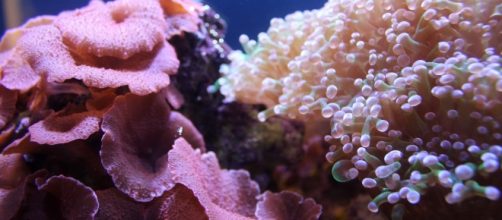A team of divers is pushing back on a so-called second mass bleaching event occurring on the Great Barrier Reef, which media reports said affected 50 to 60 percent of Cape York region. Scientists from the government-funded ARC center also found a 35 percent mortality rate, with an ultimate death toll topping 90 percent. That’s prompted local dive operators, who physically visit the reef each day, to survey the hardest hit parts. They only found between one and five percent damage.
The Great Barrier Reef Marine Park Authority, which oversees the 1,250-mile-long structure, also added on their website there were still a great many reefs with abundant living coral for tourists to view, but it was imperative the world acts and carries out the “Paris Climate Agreement to reduce greenhouse gas emissions.”
The local divers, however, used their own money and spent two weeks surveying 28 sites on 24 outer reef shelves ARC said were decimated.
They found the reefs looked identical to how they did twenty years ago. Despite alarmist headlines of a mass bleaching event, they found no changes in two decades. They said the discrepancy between what they found (five percent damage) and what was being reported was “phenomenal.”
#Sovereignty DELINGPOLE: Great Barrier Reef Still Not Dying, Whatever Washington Post Says… https://t.co/Hg5ore7XXM 👈 see here 🇺🇸 RT 🔁 pic.twitter.com/eOfNEsb2aX
— 👉🏻MagaForTrump🇺🇲 (@christopher_mrd) March 20, 2017
Crown-of-thorns starfish
Other reef threats include the crown-of-thorns starfish. This starfish feeds on coral polyps, which are needed for new coral colonies to grow. The starfish population has exploded since the early ’60’s when its chief predator, the Pacific triton, was devastated by shell hunters.
Since then, the starfish has wiped out many of the central reefs. The corals survive through a symbiotic relationship with zooxanthellae, which gives them their vibrant colors.
Marine Park Authority Director of Reef Recovery Dr. David Wachenfeld said local weather conditions will also define the final outcome of the dying or bleached coral or lack thereof. More importantly, Wachenfeld said, not all bleached coral will die. He said last year’s bleaching and mortality were highly variable across the 133,000-square-mile Marine Park, which is bigger than Italy.
Reports of death widely exaggerated
Last summer roughly 22 percent of coral became bleached despite claims of widespread destruction. Because coral species have different tolerances to ocean temperatures, some can survive in above-average seawater temperatures.
While some scientists are quick to blame climate change on any Bleaching Event, it didn’t occur across the entire reef but largely in one area.
Last June, the Great Barrier Reef Marine Park Authority’s Chairman Russell Reichelt said there was a lot of widespread misinterpretation on how much of the reef was dead, with others saying 90 percent was gone. But only 22 percent of the reef was negatively affected by the 2015 El Nino and green groups intentionally mislead the “extent and impact of coral bleaching on the Great Barrier Reef.”
Reef authority hits out on 'misleading' bleaching claims - Townsville Bulletin https://t.co/Oj8PeKyDJU
— Townsville (@Townsville) June 5, 2016
Accidental discovery
Exploration of the reef began when British explorer Captain James Cook accidentally ran his vessel into the reef.
Charting the reef’s many mazes, channels and passages continued into the 19th century. Dating of the reef shows it was growing on Australia’s continental shelf around the Miocene Epoch (23.7 to 5.3 million years ago). Tectonics pushed the continent northward into more tropical waters, allowing coral to form.
The Great Barrier Reef survived multiple ice ages, which lowered sea levels, another cause of coral death. It also survived multiple warm periods (ex: Medieval and Roman) when the Earth experienced above-average temperatures of three to five degrees. And fossils showed widespread bleaching events occurred well before CO2 levels reached today’s levels.

